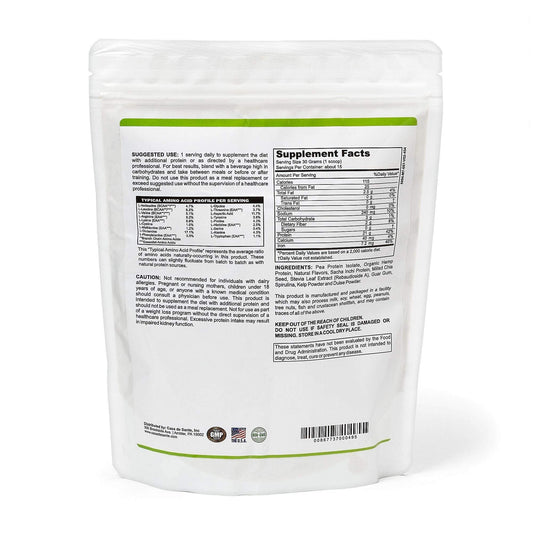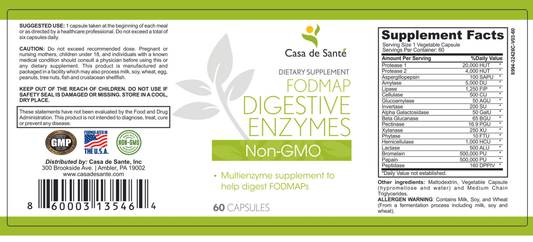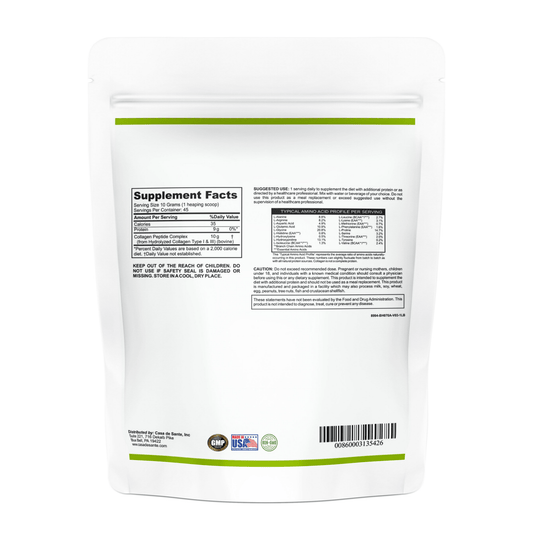Gastrointestinal Problems at High Altitude: Causes, Symptoms, and Prevention
Gastrointestinal Problems at High Altitude: Causes, Symptoms, and Prevention
Whether you're planning a hiking expedition to Machu Picchu, skiing in the Rockies, or simply visiting a high-altitude city like Denver or La Paz, your body will experience significant physiological changes as you ascend to higher elevations. While most people are familiar with altitude sickness affecting the head and lungs, fewer travelers anticipate the impact that high altitude can have on their digestive system. Gastrointestinal (GI) problems are actually quite common at elevations above 8,000 feet and can range from mildly uncomfortable to severely debilitating.
Understanding why these issues occur and how to prevent them can make the difference between an enjoyable adventure and a miserable experience. This comprehensive guide explores the causes, symptoms, and prevention strategies for high-altitude digestive problems, helping you prepare for your next elevated journey.
The Physiology of High Altitude and Digestion
At higher elevations, the barometric pressure decreases, resulting in less available oxygen in the air. This hypoxic (low-oxygen) environment triggers a cascade of physiological responses in your body. While your respiratory and cardiovascular systems work harder to compensate for reduced oxygen, your digestive system often suffers as blood is diverted away from the GI tract to more vital organs like the brain, heart, and lungs.
This redistribution of blood flow, combined with changes in hormone levels and fluid balance, can significantly impact your digestive function. The body also produces more red blood cells to carry oxygen, which can thicken the blood and potentially slow digestion. Additionally, many people experience dehydration at altitude due to increased respiratory water loss and often inadequate fluid intake, further compromising digestive processes.
The Role of Hypoxia in Digestive Disturbances
Hypoxia (reduced oxygen) directly affects the cells lining your digestive tract. These cells require adequate oxygen to maintain the integrity of the intestinal barrier and to support normal digestive processes. When oxygen levels drop, the gut lining can become more permeable, potentially allowing bacteria and toxins to enter the bloodstream more easily. This phenomenon, sometimes called "leaky gut," may contribute to inflammation and various GI symptoms experienced at high altitudes.
Research has shown that hypoxia can also alter the composition of gut bacteria, potentially disrupting the delicate balance of your microbiome. Since these microorganisms play crucial roles in digestion, immune function, and even mood regulation, changes to your gut flora can have wide-ranging effects on your overall wellbeing during your high-altitude stay.
Hormonal Changes and Appetite Regulation
High altitude exposure triggers changes in several hormones that regulate appetite and digestion. Levels of leptin (which signals fullness) often increase, while ghrelin (which stimulates hunger) may decrease. This hormonal shift explains why many climbers and high-altitude travelers experience reduced appetite, a condition sometimes called "altitude anorexia." While eating less might seem inconsequential, inadequate nutrition can compound other altitude-related issues and delay acclimatization.
Common Gastrointestinal Symptoms at High Altitude
GI complaints are reported by 30-70% of visitors to high altitudes, with symptoms varying widely in type and severity. Understanding these common issues can help you recognize and address them promptly if they occur during your journey.
Upper GI Symptoms
Nausea is perhaps the most frequently reported digestive symptom at high altitude, affecting up to 60% of travelers above 10,000 feet. It often accompanies other altitude sickness symptoms like headache and fatigue. Vomiting may follow severe nausea, particularly in cases of acute mountain sickness (AMS). Loss of appetite is extremely common, with many climbers reporting that food becomes unappetizing or even repulsive at extreme heights.
Acid reflux and heartburn also increase at altitude, even in people who rarely experience these issues at sea level. The combination of altered stomach acid production, changes in esophageal motility, and increased pressure from rapid breathing can allow stomach acid to flow upward more easily, causing that familiar burning sensation.
Lower GI Symptoms
Constipation frequently troubles high-altitude travelers due to dehydration, reduced food intake, altered gut motility, and disrupted routines. The problem can be exacerbated by the typical high-carbohydrate, low-fiber diet often consumed on expeditions. Conversely, some people experience diarrhea at altitude, which may result from changes in gut bacteria, increased intestinal permeability, or stress responses. This symptom is particularly concerning as it can rapidly lead to dehydration, which is already a risk at high elevations.
Bloating and excessive gas are other common complaints, likely resulting from changes in gut bacteria and slower digestion. The expansion of gas in the intestines due to lower atmospheric pressure can make these symptoms feel more pronounced than at sea level. Some travelers also report abdominal pain or cramping, which may stem from any combination of the above issues or from the body's stress response to the challenging environment.
Prevention Strategies for High-Altitude Digestive Health
While some degree of digestive adjustment is inevitable when ascending to high altitudes, several evidence-based strategies can minimize discomfort and help maintain GI function during your journey.
Gradual Acclimatization
Perhaps the single most important factor in preventing altitude-related GI issues is allowing your body adequate time to adapt to changing elevations. The standard recommendation is to ascend no more than 1,000-1,500 feet per day once above 8,000 feet, with a rest day every 3,000 feet. This gradual approach gives your digestive system time to adjust to reduced oxygen levels and changing blood flow patterns.
If your itinerary doesn't allow for slow ascent, consider spending at least one night at an intermediate elevation before reaching your final destination. For example, if traveling to Cusco, Peru (11,152 feet), you might stop in Arequipa (7,661 feet) for a day or two first. This stepping-stone approach can significantly reduce your risk of developing severe GI symptoms.
Hydration and Nutrition Strategies
Proper hydration is crucial at high altitudes, where respiratory water loss increases dramatically. Aim to drink at least 3-4 liters of water daily, more if you're physically active. Clear, pale urine is a good indicator that you're adequately hydrated. Consider adding electrolyte supplements to your water, especially if you're experiencing diarrhea or heavy sweating.
When it comes to nutrition, smaller, more frequent meals are often better tolerated than large ones. Focus on easily digestible carbohydrates like rice, pasta, and potatoes, which provide necessary energy without overtaxing your digestive system. Including moderate amounts of protein is important for recovery and adaptation, but heavy protein meals can be difficult to digest at altitude.
For those with sensitive digestive systems, incorporating low FODMAP foods can be particularly helpful. Casa de Sante offers a range of low FODMAP certified, gut-friendly protein powders that can be an excellent solution when appetite is poor but nutritional needs are high. Their digestive enzymes can also support breakdown of food when your natural digestive processes are compromised by altitude, helping to reduce bloating and discomfort after meals.
Supplements and Medications
Several supplements may support digestive health at altitude. Probiotics can help maintain a healthy gut microbiome during the stress of high-altitude travel. Casa de Sante's probiotic and prebiotic supplements are specifically formulated to support gut health and may help prevent the disruption to gut flora that commonly occurs at high elevations.
For those prone to constipation, starting a gentle herbal laxative like Casa de Sante's formula before symptoms become severe can prevent uncomfortable impaction. Meanwhile, medications like Pepto-Bismol can help manage diarrhea, while antacids may relieve heartburn and reflux. Always consult with a healthcare provider before starting any new supplement or medication, especially if you have existing health conditions.
Altitude-Friendly Meal Planning
Strategic meal planning can make a significant difference in how your digestive system handles high altitude. The key is focusing on nutrient-dense, easily digestible foods that won't exacerbate GI symptoms.
Low FODMAP High-Altitude Meal Ideas
For those with sensitive digestive systems, following a low FODMAP approach can be particularly beneficial at altitude. Casa de Sante's personalized meal plans can be adapted for high-altitude travel, focusing on gut-friendly options that are also practical for your journey. Consider simple meals like rice with grilled chicken and cooked carrots, or quinoa bowls with roasted vegetables and a small amount of lean protein.
Here's a simple, altitude-friendly recipe that's easy on the digestive system:
High-Altitude Quinoa Breakfast Bowl
A gentle, warming breakfast that provides sustained energy without taxing your digestive system.
Ingredients:
- 1/2 cup quinoa, rinsed
- 1 cup water
- 1 tablespoon maple syrup
- 1/4 teaspoon cinnamon
- 1 tablespoon chia seeds
- 1/4 cup blueberries (fresh or freeze-dried)
- 1 tablespoon almond butter
- 1 tablespoon pumpkin seeds
Instructions:
- Combine quinoa and water in a small pot. Bring to a boil, then reduce heat and simmer covered for 15 minutes until water is absorbed.
- Stir in maple syrup, cinnamon, and chia seeds.
- Transfer to a bowl and top with blueberries, almond butter, and pumpkin seeds.
- Enjoy warm.
Prep Time: 5 minutes
Cook Time: 15 minutes
Yield: 1 serving
Cuisine: Low FODMAP/High-Altitude Friendly
When to Seek Medical Attention
While most high-altitude digestive issues resolve with acclimatization and self-care measures, certain symptoms warrant immediate medical attention. Severe, persistent vomiting can quickly lead to dangerous dehydration and electrolyte imbalances. Bloody or black stools may indicate gastrointestinal bleeding, which requires prompt evaluation. Intense abdominal pain, especially if accompanied by fever or signs of dehydration, should never be ignored at altitude.
Remember that high-altitude illnesses can progress rapidly, and what begins as mild digestive discomfort could potentially develop into a more serious condition. When in doubt, descending to lower elevation is often the most effective treatment for altitude-related problems, including GI symptoms that don't improve with conservative measures.
Conclusion
Gastrointestinal problems are a common but often overlooked aspect of high-altitude travel. By understanding the physiological changes that occur in your digestive system at elevation, you can take proactive steps to prevent or minimize discomfort. Gradual acclimatization, proper hydration, thoughtful nutrition choices, and appropriate supplements like those offered by Casa de Sante can all contribute to maintaining digestive wellness above 8,000 feet.
With proper preparation and self-care, most travelers can enjoy their high-altitude adventures without significant digestive distress. Pack your knowledge alongside your gear, listen to your body's signals, and adjust your approach as needed. Your gut will thank you, allowing you to focus on the breathtaking views rather than bathroom breaks during your elevated explorations.




























